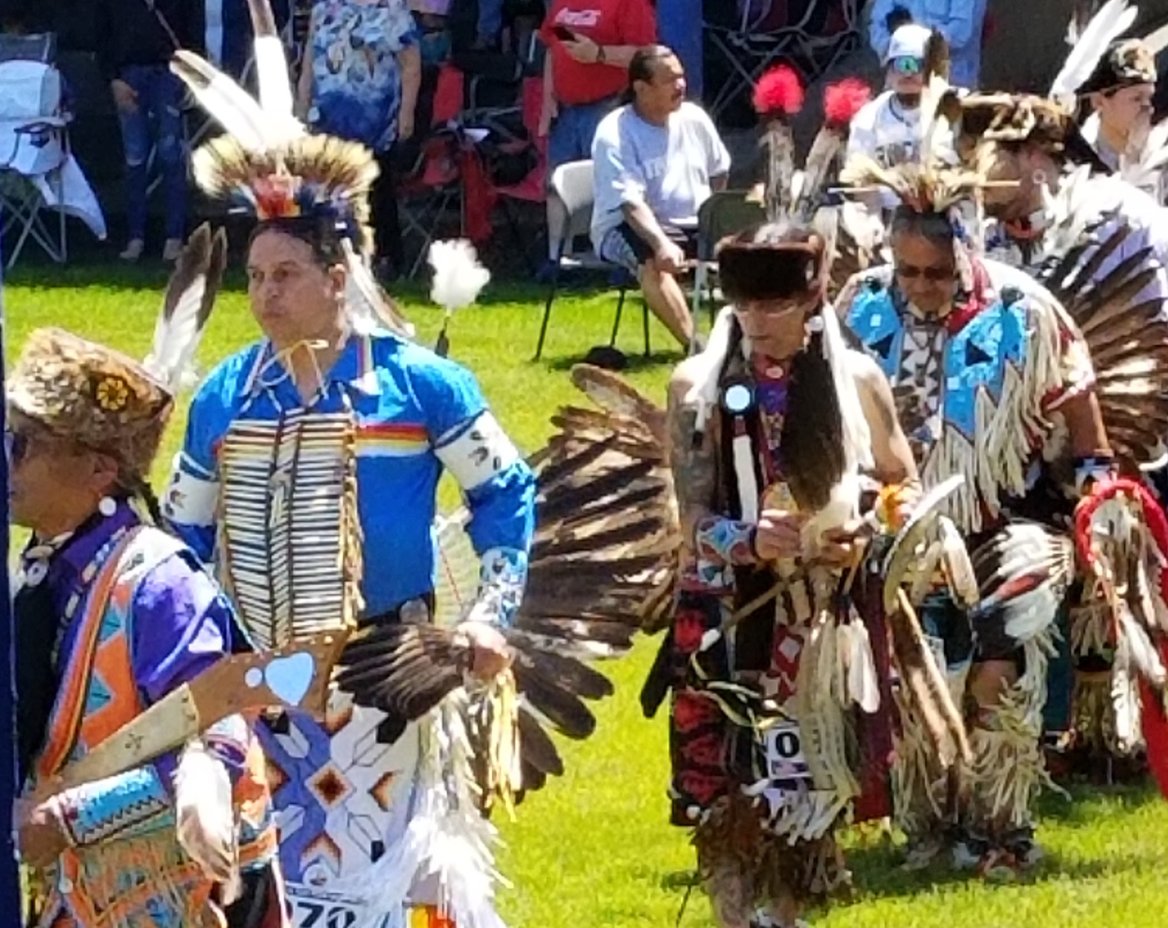Ingredients:
• 1 pkg. dry yeast (2 ¼ - 3 tsp.)
• 3 C warm water
• 1 T sugar
• 6 C flour
• 1 T salt
• 2 T lard or vegetable oil
Directions:
Dissolve yeast in water, Add salt sugar and mix gently. Cover the bowl with a towel and let the mixture “bloom” for about 10 minutes.
Add flour, salt and oil. Mix well.
On a floured surface, knead the dough until it comes together and is smooth.
Place dough in an oiled bowl and cover again to rise for 1 to 1 ½ hours.
When it has risen, press the dough to remove most of the air. Make dough into 10-12 balls rolling each into 4-5 inch circles. Carefully drop circles of dough into hot cooking oil. (Works best with cast iron skillet.) Fry 3-4 pieces at a time for only a few moments.
Drain on paper towel and serve while warm. Fry bread eaten plain, with sugar or wrapped around taco filling of your choice.
If you would like to be notified when we share new recipes, be sure to scroll to the bottom, provide your email address, check the box confirming you are not a robot, click on a few photos to prove it and click subscribe! You will then receive an email after each new post. Remember, we're always looking for new recipes and stories, so keep sending them to ecopact@fspa.org!
Story:
Native American Fry Bread (especially Indian tacos, a “wrap” with beans, meat and other typical taco fillings) is a favorite offering at Pow Wows and other native gatherings. Cooked with love by elders and younger assistants, it is a special treat! According to most articles and cookbooks about North American Native food ways, fry bread grew out of tragedy and necessity. Kevin Noble describes Fry Bread and its tragic history in his picture book "Fry Bread: A Native American Family Story" which is available to view on Youtube.
Tribes were forced from their lands by government decree and broken treaties. They left their native crops like corn, beans and squash as well as their familiar hunting and gathering places so vital to their survival.
On the reservation, separated from meaningful and trusted sources of food and identity, reservation residents relied on commodities from the government. Instead of corn, they received wheat flour, much of it old and infested with bugs. They learned to make dough and fry it in government-issued lard which was often rancid and unhealthy. Blocks of yellow cheese were also part of the government’s foods. According to the National Institutes of Health, many Indigenous people are lactose-intolerant, and removed their native foods, many suffer from negative health issues as a result of poor diet.
The good news, according to Frank Vaisvilla of the Green Bay Press Gazette, is that many tribes throughout the northern Midwest and through the US and Canada are working hard to reestablish their food sovereignty, choices of what to eat that their bodies “remember”, rather than the Standard “American” Diet often known as SAD. Wild rice, bison, native corn, maple sugar, fish and game can be found throughout Indian country. Tribes are providing elders with ancestral foods reclaiming their foodways, culture, ceremonies, identity, economy and health for all ages.
Recipe Note:
Fry Bread recipes are unique to each tribe as described by Crazy Crow Trading Post. Finding someone who had an authentic recipe for Fry Bread was a challenge. What is shared above is what I remember from my grandmother’s “Pizza Frit”. When she made bread, she kept out some dough for a treat. After frying stretched “pillows” of dough, she put them in a paper bag with sugar as did my mother-in-law with her Bohemian “Frog Bellies”. It was the same food with a different name! Many cultures have fried or baked flat breads (Indian Poori, Middle Eastern Pita, English “Puffs” and more, but few of these have the dark roots Fry Bread has.
Invitations:
• Explore Native American culturally relevant tribal products like Oneida White corn, bison meat, wild rice, and native fisheries. Check out a tribally-owned convenience stores and the North American Tradition Indigenous Food Systems site. The WI and MN State Fairs often highlight local and tribal foods to try!
• Learn about your own ethnic foodways or about a cuisine you admire. PBS and streaming services are full of stories, recipes and values represented in Mexican, Greek, Eastern European, Indian, and other cuisines.
• Make a pilgrimage to a Pow Wow this summer or fall. My experience has been one of welcome, awe, inspiration, community…and great art, crafts and food. Find a Pow Wow date and place near you and basic Pow Wow etiquette Basic Pow Wow Etiquette as a non-native person.
• Support the hard work of protecting water and land that is threatened by pollution, pipelines and mining. Find our more about the Stop the Line 5 oil Pipeline efforts.





Post a Comment